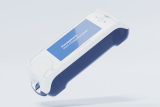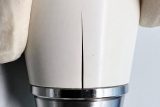Crucial Validation Considerations for Instruments, Cases and Trays
Cases and Trays
Posted by: SteriLogix
6 years ago
A BONEZONE article by Rob Meyer on Oct 08, 2018
Instrument and case and tray engineers know only too well the complexity and navigation hassles of the regulatory environment, as validation of these products is their responsibility.
Among OEM concerns with case and tray validation are sterilization and longevity of the delivery system, along with the instruments inside of it. To address these concerns and meet validation requirements, OEMs can leverage supplier partners and testing laboratories that have the expertise, regulatory competence and equipment capability to coordinate validation services and get products to market in an efficient and timely manner.
As with any device commercialization process, we recommend that OEMs engage suppliers and service providers early to ensure that all phases of design and manufacturing are smooth and as productive as possible.
To provide perspective on case and tray validation today and in the future and to help solve some of the related regulatory issues, we spoke with David Blakemore, President of BoneSim Laboratories, a provider of medical device life cycle testing. Blakemore is a sterilization, testing and validation expert who is familiar with the OEM perspective, having worked in Zimmer’s R&D department for 10 years.
What are the challenges for OEMs to overcome in validating cases/trays?
Blakemore: OEMs are always looking at new materials and even new processes. For example, OEMs have different materials they want to build cases and trays out of and must examine the validation process to build and mark them.
Often, silk screening is applied to the inside of the case so O.R. personnel know where to return the instruments. This includes silhouettes of the tools and any nomenclature. They can also be laser etched, chemically etched and color-coated. OEMs want to make sure that the cases and trays will survive high temperatures and pressures of the autoclave and also the detergent and spray impingement of the washer disinfectant.
Some of the OEM customers I see want to go to Europe for this process, as Europeans use a higher-alkaline detergent (higher pH levels). But this detergent is harder on the parts, especially cases and trays made from aluminum. Questions to ask before going down this road include: What effect does this kind of detergent have on the case and tray itself? Will there be corrosion? Was there a silk screen that failed? Did laser etching start corrosion cells, causing discoloration? Are the brackets secured? Sometimes brackets have painted-on coatings—are those affected by this higher-alkaline detergent? The instruments inside get affected, too, as with anything that’s exposed to detergents, high-pressure sprays and then processed through steam autoclaves.
What else have you heard from OEMs?
Blakemore: Validating ID markings on cases and trays is important. They need to make sure that markings don’t get affected, blurred or corroded. For example, laser etching creates a corrosion area if not passivated correctly. It comes down to a dialing-in of the manufacturing process to verify that after 100 sterilization cycles, markings don’t start to corrode. OEMs want to see how new materials hold up after 100 to 200 cycles.
OEMs are also concerned with the robustness of their case and tray design. They also want to know if a particular design is going to last for several years. The only way to determine that is to test or look at historical materials and data. That can be done if no changes have been implemented. But engineers always want to make things better, use different process or streamline current processes.
Additionally, device companies love using different colors for their cases and trays in the O.R. now. You have a large selection of very nice, bright colors…chartreuse, red, orange, purple… that you can put on anodized aluminum. But what you don’t really have is a history of how long they’ll last and what’s applied to them, in terms of detergents and subsequent autoclaves. How long will they hold up? Does the finish stay bright and nicely colored? That’s where [validation and testing] comes in.
Is there helpful FDA guidance regarding case and tray and instrument validation that you would point people to?
Blakemore: I recommend “Reprocessing Medical Devices in Health Care Settings: Validation Methods and Labeling.” Of particular interest are the FDA guidelines on instrument reuse life, found on page 20.
What you will find there is that FDA is saying that the Instructions for Use (IFU) that OEMs include with products should be very specific and clearly written. FDA would like some way to tell, by labeling, when items are past their lifecycles: “Reuse life may also be addressed by validating the number of times the product can be reprocessed and reused, and providing this specification in the labeling. If the reuse life of a device is limited to a specific number of use/reprocessing cycles, the labeling should also describe a specific tracking method for the number of reuse cycles. It may be appropriate for labeling to remind the user that the specific number of reuse cycles is dependent on full compliance with the directions for use of the device.”
That’s a tough thing to do, because you literally have to go through hundreds of cycles to determine when these items are past their lifecycle. A lot of this is up to the O.R. staff. When cases and trays become dull, or not easily cleaned or the markings are no longer legible—you have to track that for each case—FDA is guiding OEMs to provide a method for end-users to determine when they have exceeded their lifecycle. Companies discover that information through high-cycle testing; a combination of clinically relevant data, material selection information, design practices, etc.
Editor’s note: This FDA final guidance was issued in March 2015. It emphasizes proper instrument cleaning and cleaning validation, worst-case testing and device designs that are less challenging to reprocess. It also covers human factor considerations when validating reprocessing methods and provides clarity on documentation to provide in 510(k) submissions.
OEMs have asked us, “What are good strategies for establishing worst-case cases and trays and justifying new cases and trays against those, in the presence of new validation testing?” How would you answer that question?
Blakemore: This is difficult, as processes such as metal forming, laser etching, new coatings, etc. continually change.
In the case of laser etching, there are many parameters (frequency, depth of penetration, beam angle) that weigh into success so crevice corrosion is not initiated. In lieu of a long history of the same material and same process, you have to put pen to paper and research material properties at exposure to the harsh elements of clinical use and re-processing. As an engineer, you’re using best practices (controlled blind holes, pass through crevices, tight tolerances) best-case materials (low iron content, stainless, easily passivated substrates) and historical evidence that show this is a high-quality stainless steel, or this is an aluminum case that has been anodized with a certain process and we have experienced no problems with it.
To go back to your original question, the first part involves sterilization validation, which gives you a cleaning/terminal sterilization parameter requirement to maintain a certain 10-6 SAL (Sterilization Assurance Level) typical for your device. This relates directly to (n=samples) on a design given one case (soiling) for only one full use, cleaning and sterilization re-use cycle. The majority of labs request larger sample sizes and at least six full clinical re-processing cycles (CRP) to at least approximate a re-use study.
This is an important point as devices age, get scratched, corroded, oxidized and stressed—the surface characteristics, tolerances and microbial harboring abilities change. Are these devices safe to re-process and use on the first patient as well as the 300th? No one really knows, because sterilization validation is not typically performed on used devices, only new devices; cases and trays are put through this process for approval by the governing bodies. The laboratories providing the cleaning validation have been requesting “stressed” parts for years now.
A worst-case sterilization test is done at the (half cycle) lower-end temperature, time, pressure and detergent exposure to ensure that if you apply these parameters, the device is safe to use; if you apply higher requirements, the device is also safe from a bioburden standpoint. But as cases continue and the use count increases, how does the application of real-world use impact these devices? Evidence points to the fact that they certainly do not increase in efficacy or ability to be cleaned and sterilized.
The second part of the question involves worst-case lifecycle studies done at the higher end of these parameters (high temperature, pressure, most harsh detergents, and functional cycles applied) and this replicates possible excursions found throughout all Sterile Processing Department facilities throughout the U.S. and Europe. Lifecycle laboratories have found that after repeated use and sterilization, material property changes are found that include laser etching corrosion, polymer degradation, tolerance changes, impact, compressive and tensile strength reduction, illegible markings, material selection issues, crazing and cracking. Each of these property changes affects the ability to harbor and have cleaned the bioburdens seen day after day.
So, if logic prevails, the best application of effort is to provide data on a new device—which is current practice—and on the device after re-processing 100, 200 or 500 times. Many companies are adding this lifecycle use data to their Design History File timelines, but it has been an arduous task, as lifecycle studies can take several months to complete with the final design iteration.
When [sterilization validation and lifecycle studies] are complete, OEMs have a good idea of how their device will perform in the field.
An added step is to perform the approved sterilization validation again on these “fatigued” devices to ensure that they are safe after years of use. After all, the first surgical case is no less important than the 300th surgical case.
What do you see coming down the pike in the next few years?
Blakemore: What I would really like to see is standardization of the worst-case cycle. This is not only plausible, but very practical.
Terminal sterilization using conventional methods has been around for a long time and has proved useful in reducing re-infection rates. These parameters are well known and practiced in the U.S. and Europe, and application of the worst-case “lifecycle” parameters and worst-case “cleaning/sterilization” parameters make it a simple choice for OEMs to reduce the culpability in the production of devices.
If industry would come to an agreement on highest temperature and longest exposure time for steam sterilization, that would mean we wouldn’t have all of these different cycles applied to do a CRP study. We would just do the worst case, and all lesser cases would be covered by that. [Companies] could fill chambers with several different projects at once; one wouldn’t be a 10-minute cycle, one wouldn’t be an 18-minute cycle and one wouldn’t be a 273-minute cycle. It would be one cycle time.
Of course there is a risk of possible over-design burden with no benefit, but when you look at the excursions of time and temperature, they are only a few degrees Celsius and only minutes of exposure per case. Again, on the other test spectrum (bioburden evaluation), much of the cleaning and sterilization validation is done at the “half cycle,” already giving assurance levels that are acceptable.
I think standardization to the European worst-case cycle is appropriate. In Europe, they are more focused on prions that are notoriously hard to eradicate. This is a longer steam charge at a higher temperature (18m pre-charge at 278 degrees F with an alkaline wash). That’s the worst cycle for longevity that we see. If everyone decided to lifecycle validate on that harsh cycle, companies would be able to sell products anywhere.
David Blakemore is President of BoneSim Laboratories. He has over 10 years of experience in the testing and evaluation of surgical implants and instruments. At Zimmer, he managed the Biomechanical Testing Laboratory as well as the Anatomical Testing Laboratory. Mr. Blakemore has published several scientific papers, ranging from Analysis of Contact Area in UHMWPE to Biomechanical Analysis of the Human Shoulder. He received his Bachelor of Science degree in Mechanical Engineering from Purdue University, and prior to his career at Zimmer, he spent six years as Lead Orbiter Test Engineer reporting to the United States Astronaut office for the Space Shuttle Program.
Rob Meyer is ORTHOWORLD’s Senior Editor.
Categories:
You May Be Interested In:

Durability Testing of Reusable In-Vitro Diagnostic (IVD) Medical Devices
8 months ago by Jack Jennings

Understanding Functional Failures: The Impact of Repeated Sterilization Techniques
12 months ago by Jack Jennings

Instrument Testing: How to Capture the Best Data
2 years ago by SteriLogix

Durability Testing of UDI Labeling
2 years ago by Jack Jennings
Ready to Verify the Life Cycle of Your Reusable Medical Device?
Utilizing our Clinical Reprocessing Cycles (CRC) testing provides a technical, non biased, certified validation so that you can be confident your materials and products are able to withstand the rigors of reprocessing.